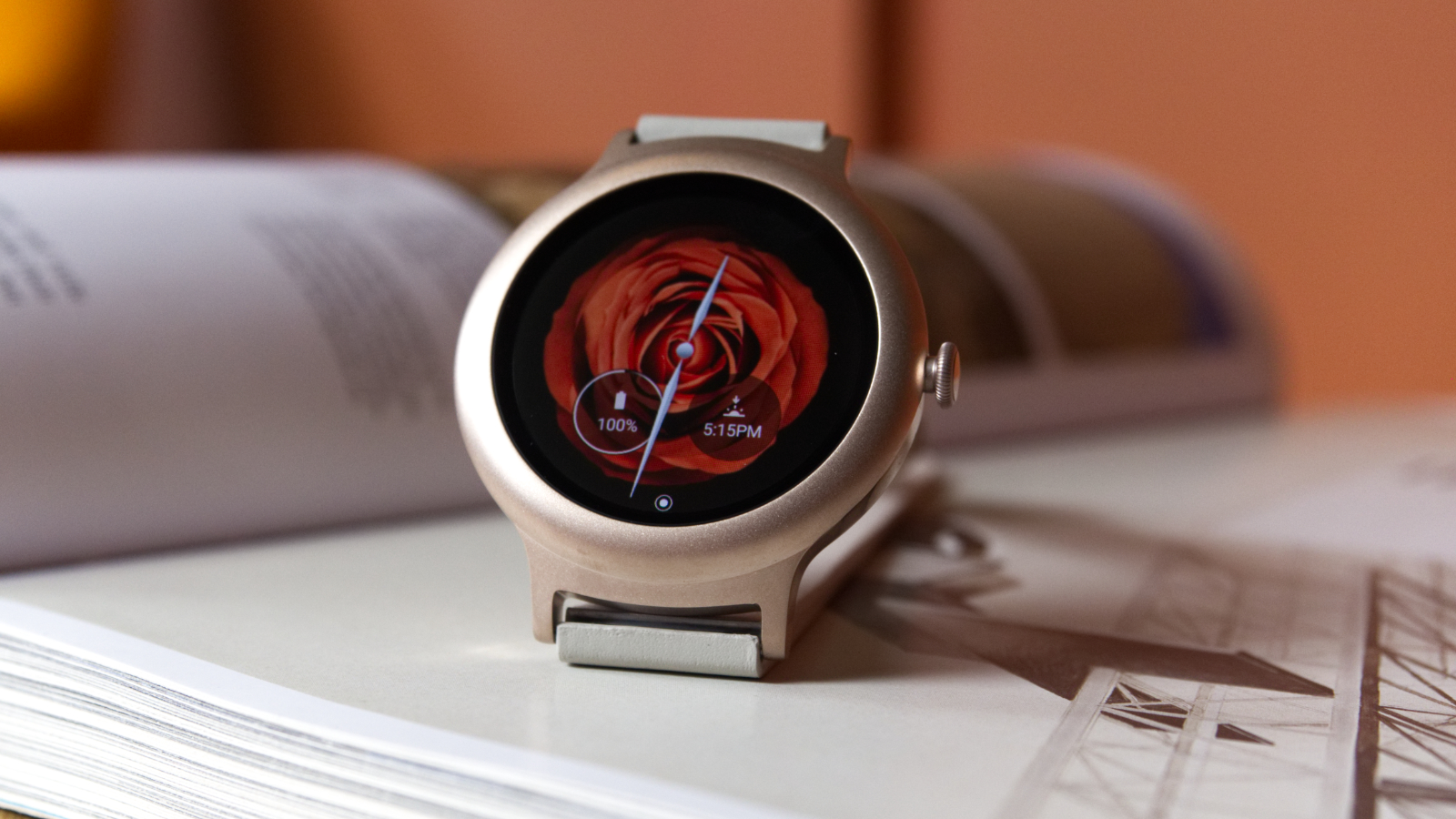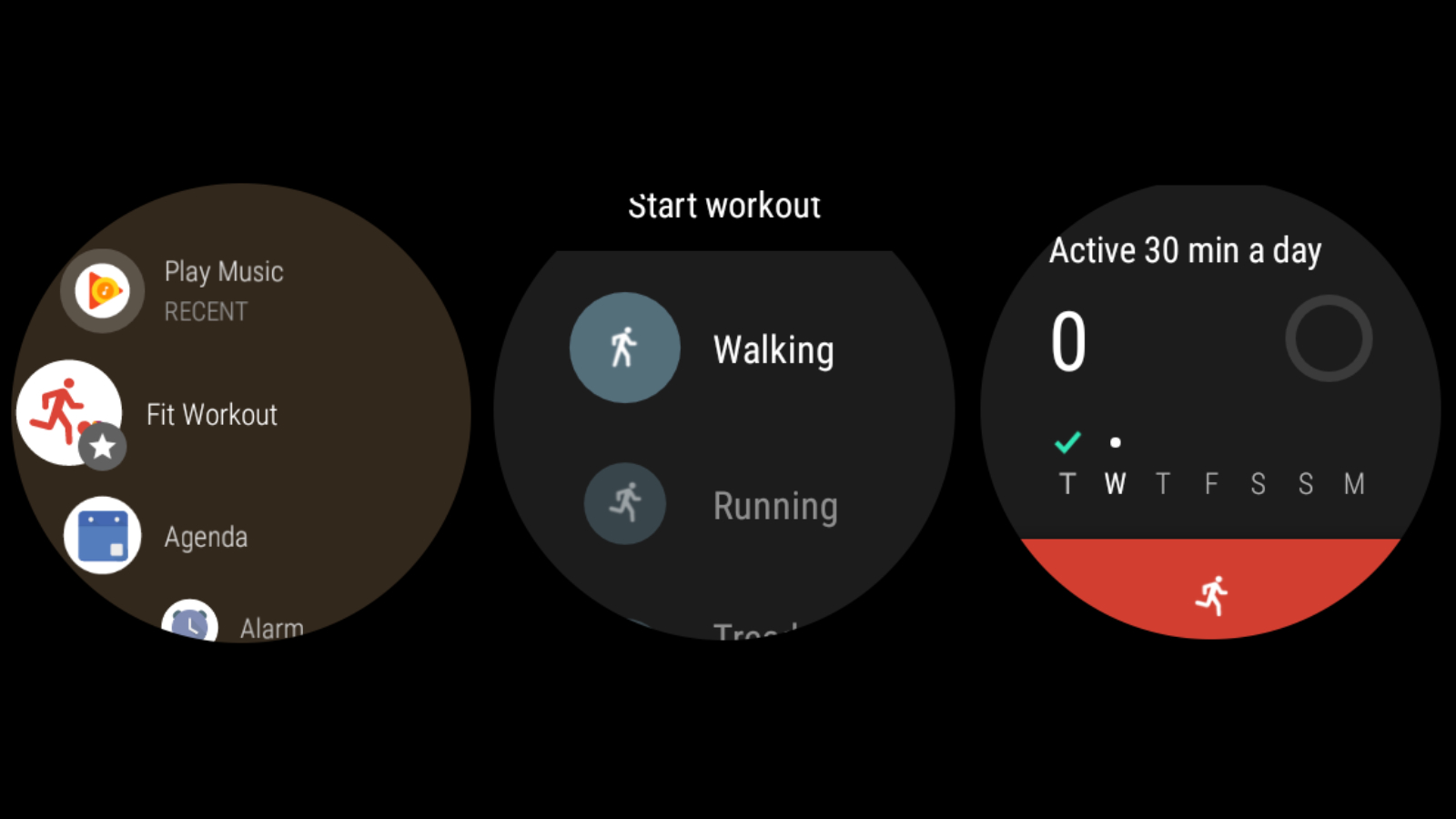Why you can trust TechRadar
- Older Snapdragon chipset mixed with tried and true specs make for a smooth experience
- LG and Google have figured out how to banish the dreaded flat tire
- Google Fit’s much-needed update makes Wear OS fitness-savvy
In the way it's being promoted, you could consider the LG Watch Style as a flagship smartwatch. But a look at the tech inside shows that it doesn’t pack in any more than it needs to.
The 360 x 360 display is running at a slightly lower resolution than the Huawei Watch, which runs at 400 x 400, but the pixel density here is slightly greater at 299ppi versus 286ppi – a difference you’ll likely not notice unless you’re really searching. We're well acquainted with the Huawei Watch, and the two look remarkably similar in terms of their display quality.
Underneath the screen, LG has thankfully opted for the Snapdragon Wear 2100 chipset, instead of the outdated Snapdragon 400 series that powered the first wave of Android Wear smartwatches.

Since its launch in late 2016, we’ve seen this long-awaited tech arrive in a few Android Wear 2.0-compatible devices, like the Asus ZenWatch 3 and Fossil Q Wander. But the Style is the first to put it to full use, with the new software and all its perks out of the box.
The LG Watch Style features 512MB of RAM and 4GB of onboard storage, two specs that haven’t wiggled much since Android Wear watches were introduced in 2015.
It might seem a bit strange for a cutting-edge smartwatch to stick to old ways, but when paired with the new Snapdragon Wear chipset and Android Wear 2.0, day-to-day use seems to hum along more smoothly and quickly on the whole here than we’ve seen with previous version of the OS.
Performance
While the LG Watch Style doesn’t break many barriers in terms of its specs (apart from the newer chipset), it has no problem providing a solid experience throughout.
The Style gets a special nod for doing so all while handling a greater amount of tasks independently of your paired phone, a new skill bestowed by Android Wear 2.0.
That freedom allows you to do things like running native applications through the new Google Play Store that’s integrated right into the watch; sending messages via emoji, voice or swipe keyboard; and playing with watch face complications – an endlessly entertaining and potential-filled addition to Google’s watch OS. And they're just a few of the new tricks to be discovered.
Despite the diminutive upgrades to its spec sheet, our time with the LG Watch Style wasn’t filled with the usual issues we experience with most Android Wear smartwatches.
The new operating system, fresh out of its long developer preview stint, is much more fluid than before; it crashes less often, and although app boot times aren’t instantaneous, it sure beats reaching for our phone.
Better yet, compared to Android Wear 1.5, we're now spending more time than ever just having fun with the watch, and executing actions we weren't able to before.
Although doing so puts some serious strain on the battery, we're more than happy to stick it on the charger so we can get back to barking commands to Google Assistant all the sooner – more on this a little later on.
Sign up for breaking news, reviews, opinion, top tech deals, and more.
Fitness
Android Wear isn’t exactly synonymous with fitness tracking, but the latest iteration of the OS looks to change that. Although the Style lacks the heart rate sensor and barometer found in the LG Watch Sport, it’s still a fairly robust fitness tracker thanks to the improvements made to Google Fit.
Having also graduated to version 2.0, Google Fit is blended into the new OS at a deeper level, and as a result is more capable than you may remember - with complications now available.
Many of the default watch faces (which borrow from the best themes and wallpapers from Google’s Nexus and Pixel lineup) allow you to embed stats like step count, your fitness goals, or a quick shortcut to begin an exercise of your choice in seconds.
In addition to making it easier to queue up a workout, Google Fit now offers a greater variety to choose from than before. Instead of some rather binary options, like walking, running, biking and a few challenges, Google Fit now offers more diverse workouts. Here’s the full list of heart-pumping workouts you can track:
- Walking
- Running
- Treadmill running
- Biking
- Stationary biking
- Aerobics
- Stair climbing machine
- Push-up challenge
- Sit-up challenge
- Squat challenge
Whether you’ve selected aerobics or any other available workout, you can narrow down your focus by adjusting the metrics tracked. Is time spent at the gym more important than the number of calories burnt? Are you gunning for a good pace for a marathon? Then you can choose to prioritize these over steps taken. These types of adjustments are simple.
In the case of the Style, the list of workouts supported is limited by the hardware inside. The LG Watch Sport, which features a heart rate sensor and barometer, is able to provide heart-rate targeted training, and can track the amount of steps you’ve taken.
According to Google, the Sport’s exclusive 'strength training' exercise utilizes the accelerometer and gyroscope to track the watch’s location on all three axes, to track basically whatever sort of muscle-building activity you might be doing.
If those stats are super-important to you then the Sport may be the better option, even if it’s a much larger fit on the wrist.
Lastly, the Style is rated IP67 for resistance to dust and water. This comes in handy when working out, as the watch can easily take some sweat or the one-off splash of water; just make sure you take it off before you dive into the pool.
Current page: Specs, performance and fitness
Prev Page Introduction and design Next Page Compatibility, apps and battery life
Cameron is a writer at The Verge, focused on reviews, deals coverage, and news. He wrote for magazines and websites such as The Verge, TechRadar, Practical Photoshop, Polygon, Eater and Al Bawaba.

